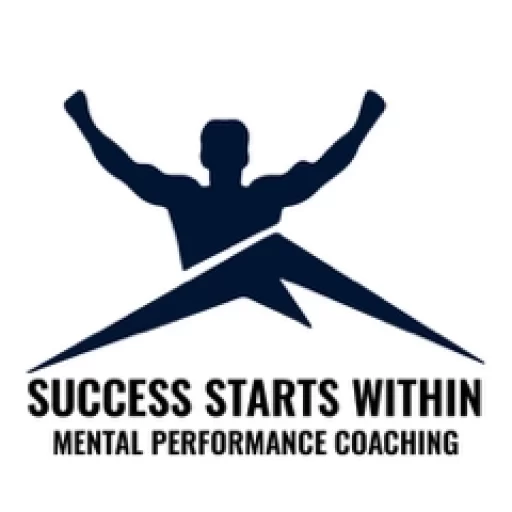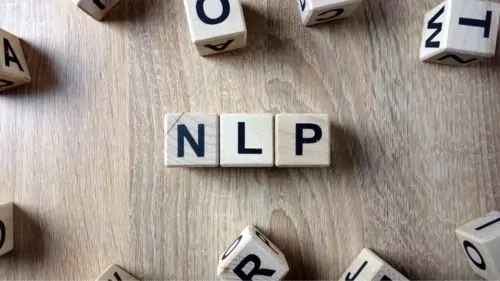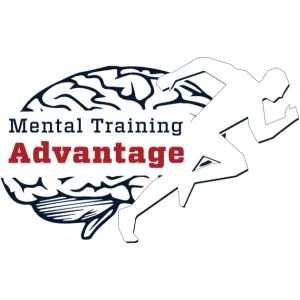Imagine you go to a bar (because you’re 21 of course and you can). You’ve just arrived there with two of your friends and see three empty seats. As you sit down, the bartender takes notice and approaches to take your order.
Now, what I forgot to mention is that you’re in a foreign country. Being the cultured individual that you are, you venture into your memory to find the word for beer. Proudly, you tell the bartender that’s what you’d like.
A puzzled look comes over her face. But, your smile and confident gaze leave no doubt that you are well aware of what you just ordered. So, she turns around to go get your drink. A few moments pass and she places a glass in front of you with a light greenish-yellow color.
You aren’t sure what kind of beer it is, and there’s no foam or sign of carbonation. But, she is just standing there and your vocabulary is much too limited to begin asking questions. So, you raise the glass and take a gulp.
Your face turns and the bartender begins to laugh as the sour taste of pickle fills your mouth. Instead of asking for a beer, you ordered a large glass of pickle juice. Clearly your words were lost in translation.
Now, with this funny example, you can begin to see what happens when you don’t understand a different language. Imagine now, what happens, when you’re unsure about the language of your own mind?
Similarly, you will be served an unwanted thought, emotion, or action much like the pickle juice. Which is why, understanding the language of your mind is powerful to you as an athlete. Knowledge that can be obtained through something known as neuro-linguistic programming.
Neuro-Linguistic Programming Defined
Neuro-linguistic programming (NLP) is an approach based on modeling. The techniques within NLP are derived and modeled after successful individuals and psychological approaches.
The motivation behind NLP is using language processes, behavioral, and perceptual techniques to alter thoughts, feelings, and actions. So when using NLP in this sense, the goal is changing some aspect of yourself for the better.
NLP is broken down into the three different words that the name includes: neuro, linguistic, and programming.
- Neuro: refers to the mind. More specifically, how the states within the mind impact communication, emotion, and behavior.Linguistic: involves the understanding that mind and body states are manifested through communication and language. Language is what’s used to gain insight and understanding into the mind.Programming: involves the ability to alter the mind and states within the body through training. Right now, you operate off one program, and with NLP, the aim is to program yourself in a different way.
“The motivation behind NLP is using language processes, behavioral, and perceptual techniques to alter thoughts, feelings, and actions. So when using NLP in this sense, the goal is changing some aspect of yourself for the better.”
How Neuro-Linguistic Programming Works
NLP is all about action. It’s an approach that no matter what technique you use or area you seek to improve, action on your part must be put forth.
Modeling is a large component of NLP, as I stated earlier. The very foundations of the practice are built on observing what has worked for other individuals.
When it comes to applying neuro-linguistic programming, a baseline understanding that we all have a map of reality that guides our thoughts and actions must be present. This is necessary, as it then allows for the altering of that map, which is what NLP seeks to accomplish.
For the most part, any NLP technique will be targeted toward beliefs that you see as limiting factors for your success. Work would center around shifting those unconscious beliefs and replacing them with more positive and productive ones.
To better understand how neuro-linguistic programming works, let’s examine the steps that would be involved when working one-on-one with a coach:
- Step 1: Work to understand your thinking, behaviors, emotional states, and goals.
- Step 2: Outline the current maps and beliefs that are running your life.
- Step 3: Implement different techniques to alter the way you think, feel, and behave.
So as you can see, it’s not a very complex process. All that’s involved is a bit of identifying and understanding on the front end, and then implementing tools and techniques on the back end.
As the ways NLP works begin to become clear, the more specific question is…how can they be used to benefit athletes?
Benefits Of NLP For Athletes
While on the surface, success for an athlete may seem purely physical, there’s much more involved. What is seen acted out on the field or court is a culmination of many factors. Most of which involve thought, feeling, and behavior.
To be a successful athlete, not only must you be skilled physically, but skilled psychologically as well. This is where NLP can become incredibly helpful.
Above, we outlined the steps that are taken within neuro-linguistic programming. Through understanding your thinking and emotional states, you can then work to alter them as you wish. This has tremendous benefits for you as an athlete, including:
Benefit #1: Increased Self-Confidence
There’s not one athlete, or anyone for that matter, who will say it’s better to be less confident. Having a high level belief in yourself and abilities directly leads to increased performance…no matter what you do.
Through NLP, you can work to build much needed confidence within yourself.
One of the first steps to strengthening confidence is understanding where your current confidence is. Including in what situations you feel the most confident and when you feel the least confident.
What then happens is, through the implementation of NLP techniques you can gradually increase the belief you have in yourself within specific situations and in general.
As your confidence increases, so will your game. Performances will be freer, with less doubt slowing you down and forcing you to hold yourself back out of fear of making a mistake.
“One of the first steps to strengthening confidence is understanding where your current confidence is. Including in what situations you feel the most confident and when you feel the least confident.”
Benefit #2: Stronger Leadership Skills
Every team has a leader, and every athlete has the capabilities of being a leader. Yes, even you who right now may have never imagined the term leader could be used to describe you.
Anyone can be a leader, all it takes is developing stronger leadership skills. Something that can be gained through the use of certain NLP techniques.
One way NLP can help strengthen your leadership skills is through gaining control of your state. This refers to the ability you have to manage both your emotional and physical states. Think self-control over your mind and body.
Another way NLP helps is by providing you with more self-awareness and social awareness. It gives you clearer insight into yourself, along with how others think and feel. Both of these skills are necessary for a strong leader.
Benefit #3: Greater Ability To Perform Under Pressure
One of the greatest traits of an athlete, or any performer for that matter, is the ability to perform their best even under the most intense of circumstances.
Those final minutes of a game, when everything is riding on this very next play or move, that is when champions are made. However, that situation is truly a byproduct of a strong mind and hours upon hours of training. NLP can help with one side of that equation.
With neuro-linguistic programming, you can train yourself to stay calm, composed, and confident under pressure. The more you can control your mind and emotions in these situations, the greater your chances of physical success.
“Those final minutes of a game, when everything is riding on this very next play or move, that is when champions are made. However, that situation is truly a byproduct of a strong mind and hours upon hours of training.”
Benefit #4: Increased Emotional Control
Little can get in the way of athletic success quicker than uncontrollable emotions. You can shoot with extreme proficiency, and be able to throw harder and more accurately than anyone else, but if your emotions control you, such physical talents will do little good.
Now, what exactly do I mean by controlling your emotions?
It’s all about identifying what type of emotional state you’re in when you perform your best, and then having the ability to choose that state at will.
Some athletes perform best when they are amped up and motivated. Others perform at their peak when they’re angry and feel as though they have something to prove. While a different group of athletes perform their best when simply having fun and enjoying themselves.
Each one of those involves an emotional state. In reality, it doesn’t matter what emotional state you perform your best in. What matters is you have the ability to get yourself into that state come game time. That’s what NLP can do for you.
Different NLP Techniques Athletes Can Use
A key when it comes to any of the neuro-linguistic programming techniques listed below is consistency. Whenever we are working with the mind-seeking to alter thoughts, emotions, and behavior-repetition is a much needed ingredient.
There must be consistent effort put forth, making use of any certain technique, to truly make a change occur. What you must remember is that these exercises are aimed at shifting unconscious beliefs. Such beliefs that have been programmed within your mind over many years.
Luckily, you do not need many more years for the beliefs to change. Simply some focused and consistent effort can do the trick.
Now, I will warn you, some of the techniques may seem odd, stupid, and downright strange. But, if you give them a try and have patience, they can create tremendous positive change for you and your game.
“Whenever we are working with the mind-seeking to alter thoughts, emotions, and behavior-repetition is a much needed ingredient.”
Techniques #1: Dissociation
Imagine if you were disconnected from your own thoughts. They happen, yet, they do not have a direct impact on the way that you feel or the actions you take. If that were the case, do you think anxiety, fear, or self-doubt would hold you back any longer?
Let’s say you’re about to start a game and you’re feeling anxious. This anxiety leads to you beginning the game tight and not allowing yourself to perform freely.
Now, imagine you were able to set that anxiety aside and disconnect it from yourself. How much different would the game likely go?
While you cannot physically remove anxious thoughts and feelings, you can work to distance the impact they have on you through a technique known as dissociation.
What you do is close your eyes and imagine you are floating outside of your body. See yourself about to begin the game feeling incredibly anxious. Keep observing how that feels and work to see it as though you were watching a completely different person.
This works to create a disconnect between the emotion and you. Leading to the feeling having a significantly lower impact on you as you begin the game.
Technique #2: Cognitive Reframing
In any given situation, there are multiple interpretations available. While it may seem as though we are stuck with only one option based on the way we’ve been programmed to think, the truth is, in any given situation you can choose how to respond.
For example, there’s a good chance that as an athlete, you’ve been conditioned to feel upset after a loss. Now, there’s no denying that you want to win. Winning brings about feelings of success. Therefore, in contrast losing should bring about feelings of failure.
But why? If your aim truly is to win, then you should be putting yourself in the best position to win the next game. Which involves learning, rather than getting upset.
Cognitive reframing is the process of switching out the way you perceive a situation. Here are some examples of what cognitive reframing would look like:
- Saying “I feel excited” rather than “I feel nervous” before a game.
- Viewing a mistake as an opportunity to learn rather than getting upset.
- Feeling grateful for a loss as it shows you where you can improve rather than beating yourself up.
- Saying “I perform well under pressure” rather than seeing yourself as someone who chokes.
Cognitive reframing is all about switching the way you view a situation. In doing so, you generate a mindset that will lead to more success.
“In any given situation, there are multiple interpretations available. While it may seem as though we are stuck with only one option based on the way we’ve been programmed to think, the truth is, in any given situation you can choose how to respond.”
Technique #3: Anchoring
Imagine right before a game you could get yourself into your peak state to perform! How much better do you think you’d play? Now, imagine you could do this every single time you stepped out onto the field/court.
This kind of control would be pretty incredible, wouldn’t it?
Well, such control is possible, but first you need to know what kind of state you want to begin with. This is known as your peak performance mindset. The way of thinking and feeling that you’re in when performing your best.
Once you’ve identified that state, it’s time to use the technique of anchoring. With anchoring, you’re going to do exactly what the name implies…anchor a state.
Get yourself into your peak performance state. Really feel it! Now, think of a word that describes that feeling. That word is what you want to anchor the feeling with. Repeat that word to yourself over and over while you’re in your peak state.
Do this every day, and what it does is provide you with the ability to quickly get yourself back into that peak state before a game. Simply by repeating the word.
Technique #4: Altering Your Image
This can be a helpful technique for who you are as an athlete as a whole, or how you see yourself in specific situations.
We all have images we hold about ourselves. How we see ourselves on a large and small scale. The question is, do you see yourself in a way that helps or hurts your performance?
When it comes to performing well under pressure, for example, is your current belief that you’re a clutch player or someone who chokes? If it’s someone who chokes, then that needs to be changed.
Altering your image involves picturing how you currently see yourself and how you feel. Imagine it as a large colored ball in your mind. Then, see a different ball (of a different color) much smaller in the corner. Now, breathe deeply, and as you do, see the smaller ball grow and the larger one shrink.
After a few deep breaths, you should have switched your old image out for a new one. The more you perform this exercise, the stronger your new image will become.
“We all have images we hold about ourselves. How we see ourselves on a large and small scale. The question is, do you see yourself in a way that helps or hurts your performance?”
Final Thoughts
Understanding the language of your mind is key.
If things get lost in translation, many unwanted thoughts and emotions will reveal themselves come game time. Your aim should be to gain clear understanding of your mind and the actions it ignites.
From there, you gain the power of control. After all, the only real control we have is over ourselves, so you do not want to leave that up to chance.
Neuro-linguistic programming offers powerful tools for you to use as an athlete that will provide insight into the workings of your mind. Along with the ability to increase confidence, focus, and many other positive traits that will elevate your game.
Go ahead and choose one of the exercises listed above and put it into practice.
Thank you for reading and I wish you the best of success in all that you do.





